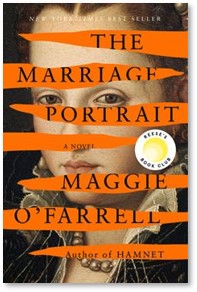Every Sunday I check out the best-seller lists for hardcover and soft-cover fiction. Often, I find myself gobsmacked by the books appearing on them.
Full disclosure: I am a published fiction author and have been in a writing group where we critique one-another’s work for over 25 years. I understand the craft of writing and what constitutes both good and bad fiction. Also, I have participated in several book groups where we read a variety of selections, including non-fiction. The other members get my analyses of plot, pacing, characterization, dialogue, description, etc., which sometimes perplexes them.
Two Recent Novels
Several of my book-group’s fellow members take the position that book is good if it entertained or amused them for a few hours. Fair enough; that’s a perfectly valid viewpoint. But I demand more than that if I am going to spend time in my busy day with a book.
What I see on the best-seller lists, however, reflects more of the entertainment approach than mine. Take two recent novels: “The Marriage Portrait” by Maggie O’Farrell and “It Ends with Us” by Colleen Hoover.
“The Marriage Portrait”
 Ms. O’ Farrell also wrote “Hamnet,” which did appear on the best-seller list for multiple weeks. I tried it, did not like it, and put it down unfinished. So, I approached “The Marriage Portrait” with some trepidation . . . only to find that I couldn’t put it down.
Ms. O’ Farrell also wrote “Hamnet,” which did appear on the best-seller list for multiple weeks. I tried it, did not like it, and put it down unfinished. So, I approached “The Marriage Portrait” with some trepidation . . . only to find that I couldn’t put it down.
An historical novel, it takes us through the life of Lucrezia di Cosimo de Medici, who was married at 15 to Alfonso, the Duke of Ferrara.
I loved it. The writing is rich and layered, full of texture and wonderful phrases. We experience Lucrezia’s life in detail, coming to understand her motivations, her likes and dislikes, her fears and triumphs. Reading this book is like stepping back into 16th-century Florence and Ferrara.
The novel entertains, informs, and educates the reader as it pulls you through the story of her life. You will feel richer for having met Lucrezia.
“It Ends with Us”
Ms. Hoover’s novel, our book group’s October selection, could not be more different. I am finishing it only so I can participate in the group’s monthly meeting and speak knowledgeably about it. Otherwise, I would have returned it to the library by now and moved on to something else.
 I know that Ms. Hoover has become the women’s author of the hour with three of her novels making the New York Times list of the Number One Books of 2023. Knowing that, I was actually excited about meeting an author new to me and possibly loving her work as much as so many other readers seem to do.
I know that Ms. Hoover has become the women’s author of the hour with three of her novels making the New York Times list of the Number One Books of 2023. Knowing that, I was actually excited about meeting an author new to me and possibly loving her work as much as so many other readers seem to do.
The meeting did not go well. To me, this novel is almost juvenile in its writing style and content. I have read Young Adult fiction that was better written and more sophisticated. Oddly, however, it also contains numerous detailed sex scenes that are very adult. They read like soft porn, making the novel a contemporary bodice-ripper romance. It’s a very odd combination.
At one point (so far) she uses the wrong word. Really. The author confuses careen and crane to create a really bizarre image.
Not the Real Boston
Although set in Boston, “It Ends with Us” lacks information on the city and its locations; the kind that supplements the book’s descriptions. What it does offer, however, strikes me as inaccurate. For example: the protagonist buys a building in Park Square to house her flower shop. Anyone familiar with the Park Square area of Boston knows it is bordered by very large buildings unaffordable to a young woman looking start a business. Oh, you can rent a shop in one of those buildings, but it will cost you.
“It Ends with Us” is filled with cardboard characters, stale tropes, unrealistic situations, and insipid dialogue mixed with graphic sex. That must be a popular mix, because so many people buy and read her novels.
Nourishing Meal or Junk Food
I often compare books to food. “The Marriage Portrait” is moussaka, paella, cassoulet, filled with interesting tidbits and layered with flavor. “It Ends with Us” is a Twinkie: momentarily tasty but ultimately just junk food. I will not be spending my valuable reading time with more of her novels.


